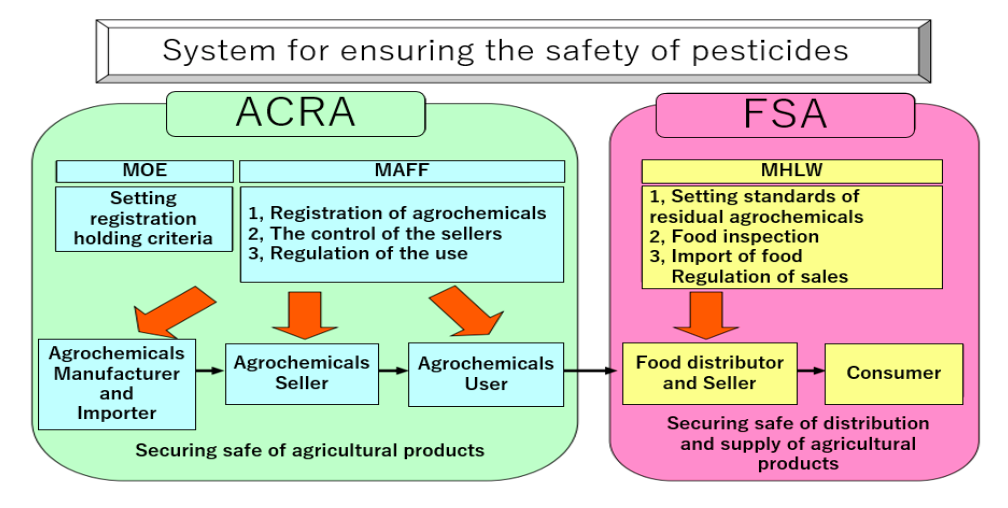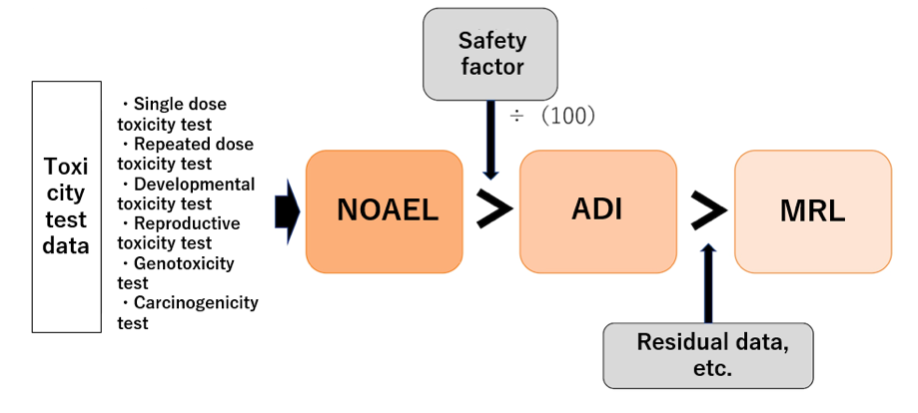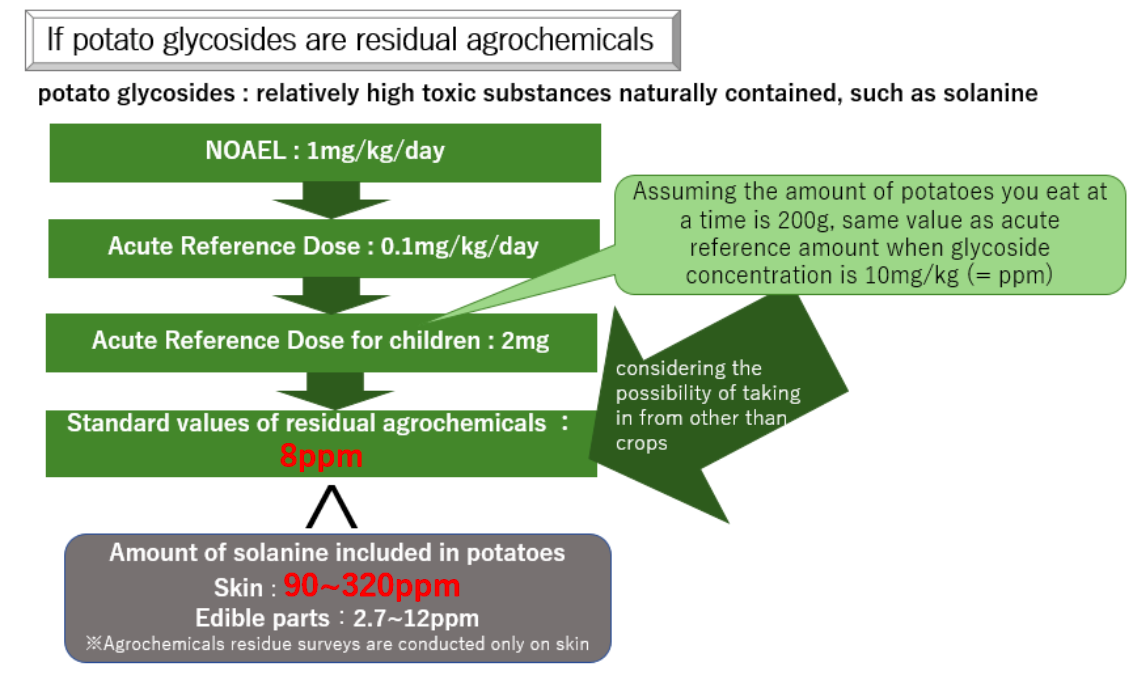Rule of Agrochemicals
Regulation of Agrochemicals
“Who decides the standards of agrochemicals?”
You may think that farmers choose agrochemicals by themselves.
However, it is not true.
Agricultural Chemicals Regulation Act and Food Sanitation Act are set to ensure safety of agrochemicals.
What kind of and how much agrochemicals can be used is limited by these acts.

Reference Kanto Agricultural Administration Bureau Hamamatsu Regional Center.
Noyaku no anzensei [ Safety of Agrochemicals]. [pdf]
Retrieved from
https://www.maff.go.jp/kanto
Agricultural Chemicals Regulation Act is managed by the Ministry of the Environment and Ministry of Agriculture, Forestry and Fisheries.
Ministry of the Environment sets the Residual Agricultural Chemical Concentration to decide standards about registration of agrochemicals.
It is based on how much effect and toxicity to the environment they have.
Minister of Agriculture, Forestry and Fisheries registers the approval for use based on the judgment results.
The applied agrochemicals by this can become available to manufacture and use.
Ministry of Agriculture, Forestry and Fisheries do not only registration of the agrochemicals, but also control and regulation of the dealers. In short, Agricultural Chemicals Regulation Act is a low that focusing on ensuring safety in the production stage.
On the other hand, Food Sanitation Act is managed by the Ministry of Health, Labour and Welfare.
The main contents are setting standards for agrochemical residues, food evaluation, and import and sale regulation.
In a word, this act is low that focusing on ensuring safety in the distribution and sales stage. In this way, agrochemicals have various rules are inspected at each stage before crops reach us.
How to Set Regulations
There are mainly three numerical values for standards of regulations.
1NOAEL (No Observed Adverse Effect Level)
The highest experimental point that is without adverse effect to the human body.
2ADI (Acceptable Daily Intake)
The amount of a specific substance in food that can be ingested daily over a lifetime without an appreciable health risk. (Set by the Food Safety Commission)
3MRL (Maximum Residue Limit)
The maximum amounts of agrochemicals that have no problem if they are permitted. (Ministry of Health, Labour and Welfare sets Maximum Residue Limits from this numerical values)
Based on these numerical values, Ministry of Agriculture, Forestry and Fisheries provide agrochemicals' use standards. These are decided through various experiments.
The Method of Determining Numerical Values
1. By experiments that give agrochemicals to the animals such as rats, check abnormal quantity not to appear.
2. From the experimental results, set the standard values (NOAEL).
3. The values which divided NOAEL by 100 (safety factor) is ADI.
4. Besides, inspect the amount of regulation of residual agrochemicals in the environment.

Reference The Conference of Wise Men To Save The Safety of Food (2015).
Scientize Food. Japan: Taisei-Shuppan
From this data, lay MRL which is less effective to the human body and environment. In this way, the maximum quantity that farmers can use is decided a one-100th of the quantity that may give harm to a human being.
Furthermore, the amounts of residues are smaller than those used.
It is a few quantities of a probability that we take them for a mouth.
It does not affect to a human.
However, if you understand how to calculate, it may be difficult to feel how severe the standards are set.
So we shall see what takes place if we evaluate the safety of food which we daily eat by the standards of agrochemicals.


Reference Chikako Uneyama (2009) [Thinking about real “food safety”]


Reference Chikako Uneyama (2009) [Thinking about real “food safety”]
First, please look at the figure that finds ADI of onions. Normally, ADI are set only agrochemicals and food additives, not general vegetables.
However, calculating it by way of experiment, the ADI is about 25mg. We cannot almost eat them.
Consequently, safety standards of added things are higher than that of the food itself. Furthermore, the standard of quantity sets more smaller than this numerical value because MRL is calculated from this value.
Then we want to calculate MRL, but we cannot do it. It is because onions do not remain behind.
Consequently, please look at the next figure.
It finds concentration of a residue standard of potatoes. Potatoes includes harmful substances such as solanine.
Calculating it, the residue standard of potatoes amount to 8ppm. It is the standard values that it would be set if potatoes were agrochemicals.
However, the amount of solanine which included in potatoes is 90-320ppm.
It considerably exceeds the standard.
As the above account suggests, we can see safety standards are much more severe than food itself.
Can you feel how severe the standards are in comparing it with daily food as examples?


